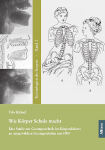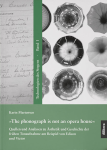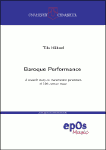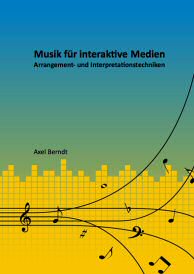»Technologies of Singing: Research into the Dispositif Singing – Body – Media in the Early Years of Recording«
Musicology Seminar Detmold/Paderborn, DFG, 2016–2021.
Heads: Rebecca Grotjahn, Malte Kob, Karin Martensen
This project aimed at writing a history of singing that incorporates the body and media, particularly for the first decades of the twentieth century. It was assumed that the new medium of recording provoked a rethinking of the body, that had been related to changes in singing practice against the backdrop of a mechanized concept of the body. That singing has been increasingly understood as an embodied technique is not only clear from theories of singing, but also from changes in singing, for instance with respect to stance, breathing, vibrato, and the use of different registers.
This approach has been reflected in the four intertwined project sections:
- careers of singers as media careers
- technique and aesthetics of vocal recordings
- sources and documents concerning the aesthetics of vocal recordings and
- analysis of vocal technique in body and media discourse.
Publications (Selection):
: Wie Körper Schule macht. Eine Studie zur Gesangstechnik im Körperdiskurs an ausgewählten Gesangsschulen um 1900 (= Technologien des Singens 2), Munich: Allitera 2021.
Publisher's page
|
bibtex
Review:
K. Sprau, in: Die Musikforschung 76/1 (2023), S. 67–68.
: »The phonograph is not an opera house«. Quellen und Analysen zu Ästhetik und Geschichte der frühen Tonaufnahme am Beispiel von Edison und Victor (= Technologien des Singens 1), Munich: Allitera 2019.
»Voice and singing in popular music of the U.S.A. (1900–1960)«
The Liszt School of Music, Weimar,
DFG, 2011–2014.
Head: Martin Pfleiderer
How does one appropriately describe and interpret pop voices and singing styles? How do vocal expressions relate to the complex of lyrics and musical composition, of performances and images of singers, of processes of identity construction and cultural stereotypes?
Guided by these questions and using examples of singers from Vaudeville, American Popular Song and Musical, Gospel Music, Blues und Rhythm & Blues, Jazz, Country Music und Folk Music as well as Rock'n'Roll and early Soul, the research project Voice and Singing in Popular Music in the US (1900-1960) analyzes and illustrates how vocal expressions have developed and influenced each other across genre divides, and how they have influenced and reflected images, cultural stereotypes and collective identities.
The research project focuses on these central concerns:
- Analysis of means of vocal expression using audio material and other historical sources; this includes the development and testing of adequate research methods, such as a systematic terminology of vocal forms of expression, graphic ways of representation with annotated musical notation as well as visualizations via software.
- Interpretation of means of vocal expression in the context of images of stars and cultural stereotypes in the US from 1900 to 1960, taking into consideration historically changing patterns of identity construction in terms of social and ethnic groups, regions in the USA, as well as gender and age.
Additionally, the software Vocalmetrics has been developed. It allows its users to visualize similarities and differences between means of vocal expression in over 200 representative sound examples from the history of US-American popular music; Vocalmetrics will be made available as freeware and can be used for other musical genres and research questions.
Publication (selection)
(Hg):
Stimme, Kultur, Identität – vokaler Ausdruck in der populären Musik der USA, 1900–1960
(= texte zur populären musik 8), Bielefeld: transcript 2015.
DOI: 10.14361/9783839430866 | bibtex
»Computer-generated expressive music performance for musicological listening analysis«
Faculty of computer science, Otto-von-Guericke University Magdeburg, Zentrum für Telemann-Pflege und -Forschung Magdeburg, Sachsen-Anhalt, 2008–2011.
Publications (Selection)
: Baroque Performance – a research study on eighteenth century music performance (= Studies in Cognitive Musicology 2), Osnabrück: Electronic Publishing Osnabrück 2013.
Online-View (external link) | bibtex
: Musik für interaktive Medien: Arrangement- und Interpretationstechniken, Dissertation OvGU Magdeburg, Munich: Dr. Hut 2011.
external links: Full text | to the author




